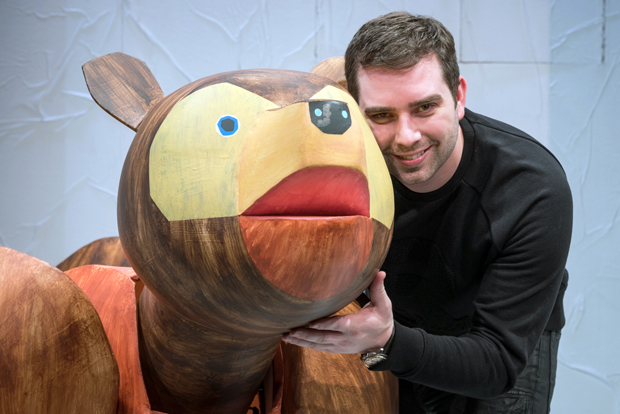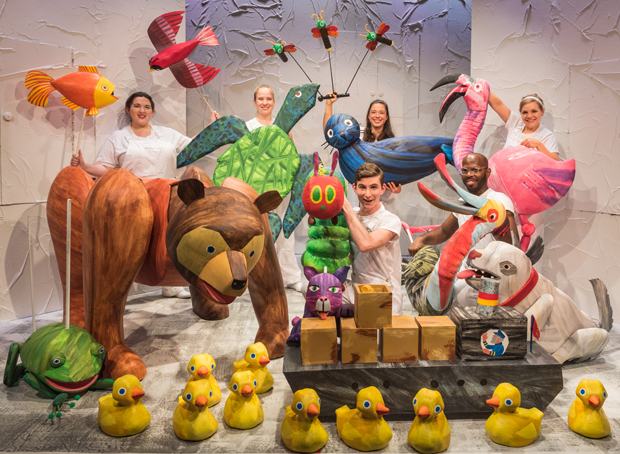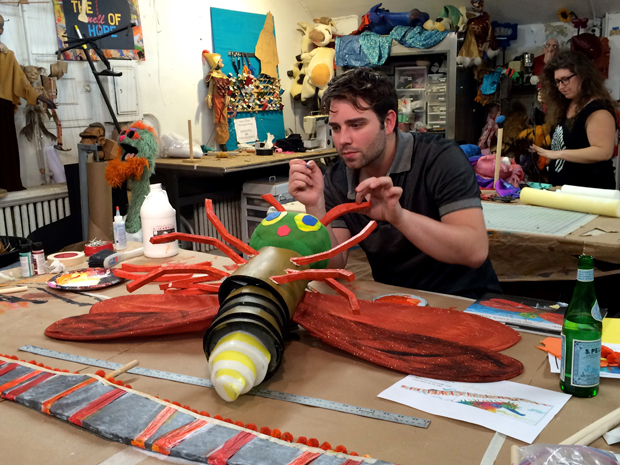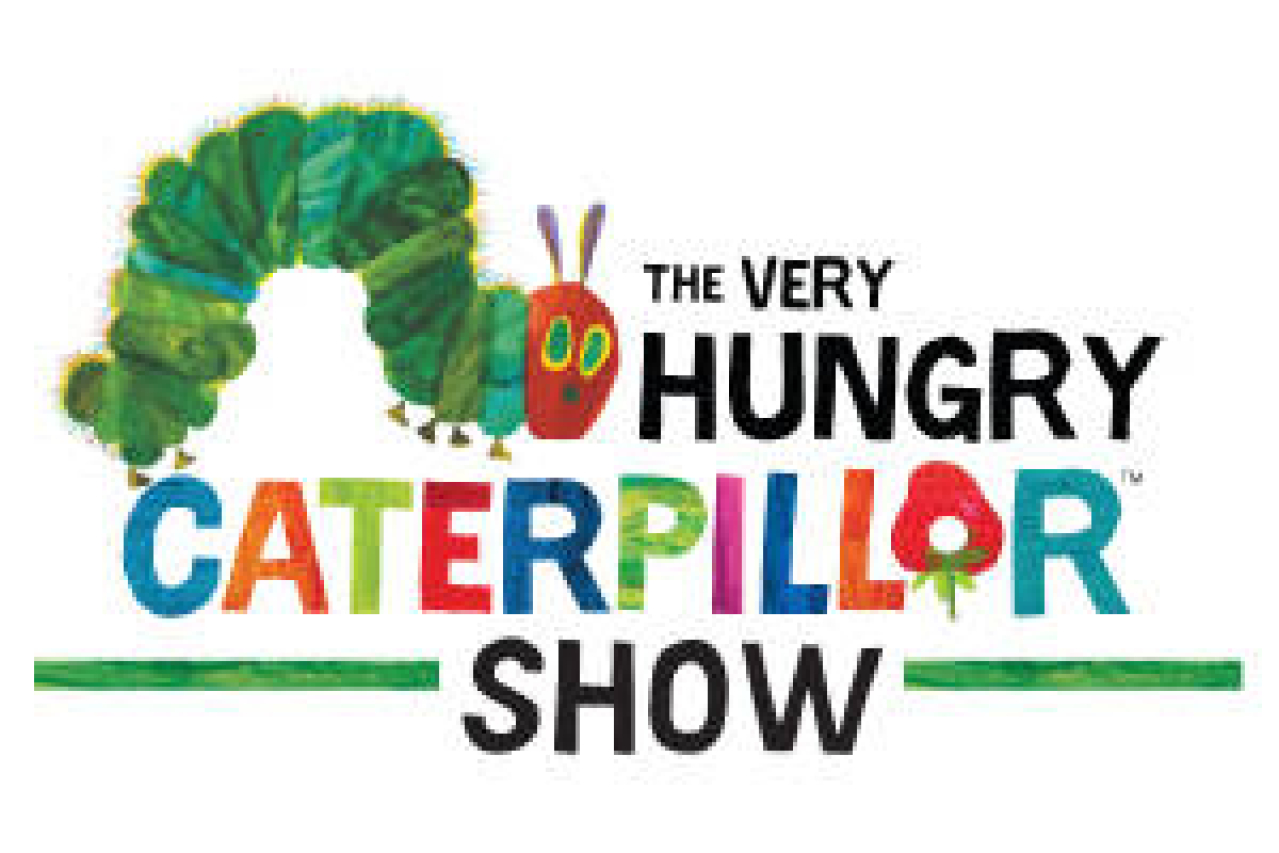5 Questions (Mostly About Puppets) With The Very Hungry Caterpillar's Jonathan Rockefeller

(photo provided by JT Public Relations)
With over 75 puppets in its stable, off-Broadway's The Very Hungry Caterpillar Show features a new creation appearing nearly once a minute, including bears, ducks, fireflies, a bunny, a seahorse, and, of course, a caterpillar. According to creator Jonathan Rockefeller, the fact that so many new animals are coming out onstage so quickly makes this the perfect show for children and adults (especially those with very short attention spans) even before you consider that it's based on four beloved books by children's author Eric Carle.
The iconic green and red caterpillar is joined by his buddies from Carle's Brown Bear, Brown Bear, 10 Little Rubber Ducks, and The Very Lonely Firefly in the kid-oriented show, which focuses on bringing the books' characters to vibrant 3-dimensional life while sticking as close as possible to the Carle's text. "He's been entertaining kids for 50 years," said Rockefeller. "You've got to think this guy knows what he's talking about."
"We're delighted that so many kids are coming to see it and we hope that it fosters a love of theater for many years to come," Rockefeller continued, "because there's also no greater joy than sitting in a theater filled with excited children who are loving what they're seeing in front of them on the stage."

(photo provided by JT Public Relations)
1) What was your first experience with Eric Carle's books?
I still have my original copy of The Very Hungry Caterpillar from when I was a child. It's very ragged now. I always loved the vibrant illustrations — to me they seemed to leap out of the page. They were accessible; potentially you could actually go and draw them yourself. And it's that wonderful tissue paper collage technique. Eric Carle just has such a magical storytelling brain that weaves its way through numbers and colors and days of the week and seasons and all those sorts of things. He's innately linking up to a child's curiosity about the world, and I think that that, tied in with beautiful illustrations, is a perfect book.
2) What was the process of adapting these books for the stage?
It was a visual, theatrical and dramatic approach. We tried to remain incredibly faithful to Eric Carle's text because all the kids know the words and that's part of the game that we play — they know what's going to happen next. Children are the most joyful critics and the most harsh critics. You learn instantly if a kid likes it or not.
And we do tell stories that they haven't heard before as well. The two that most children go in knowing are Brown Bear, Brown Bear and The Very Hungry Caterpillar but there are two other stories they don't know.

(photo provided by JT Public Relations)
3) What were you concerned about preserving from Carle's illustrations when creating the puppets?
The hardest thing is that in the books they're two-dimensional, and Carle usually only draws them from one angle. He'll also draw the same animal in three different ways. Brown Bear, Brown Bear is a perfect example of that. He draws it differently every time he draws it, but each time you feel the spirit of the drawing and get all the sort of parts of it. So it became a question of how do you reinterpret these sometimes a bit Picassoesque drawings while also being faithful to them? What does that actually look like from the front angle, from the back angle, for that illustration to still make sense?
4) How did you forge ahead with that creation process?
We've preserved Carle's same techniques, the same painting styles, the same shapes. We've got a very talented team of puppet builders that we work with in house, and they have done the most marvelous job of taking it from sketch form all the way into building these three-dimensional things. They'll build them out of cardboard usually first and they'll see if they make sense, if they can stand up, and if they can operate. Then, we go through foam or fabric or different techniques for different animals.
5) What's the most memorable reaction that you've gotten from a kid?
We have a yellow animal that comes out onstage, a yellow duck, and the kids sort of guess what the animal is going to be before it appears. And one of them screamed out "a yellow taxi!" — and of course that's a New Yorker for you. I could list more, like, "That is the fattest caterpillar I've ever seen," but there's just a lot of "wow"s. And there's a lot of tears – from parents enjoying the story that we tell about The Very Lonely Firefly. They're sitting next to their children, and it's all about growing up and leaving, and I think it's a real bonding experience on the part of both parents and children.

(photo provided by JT Public Relations)











